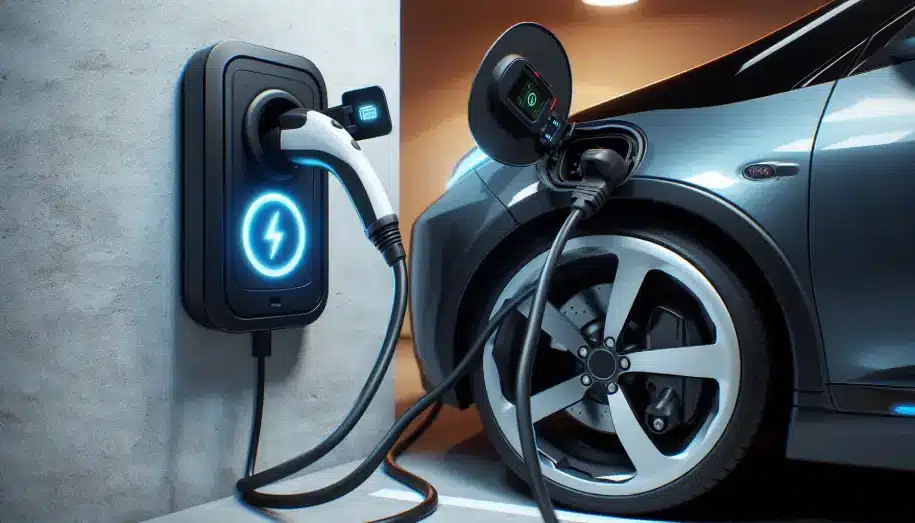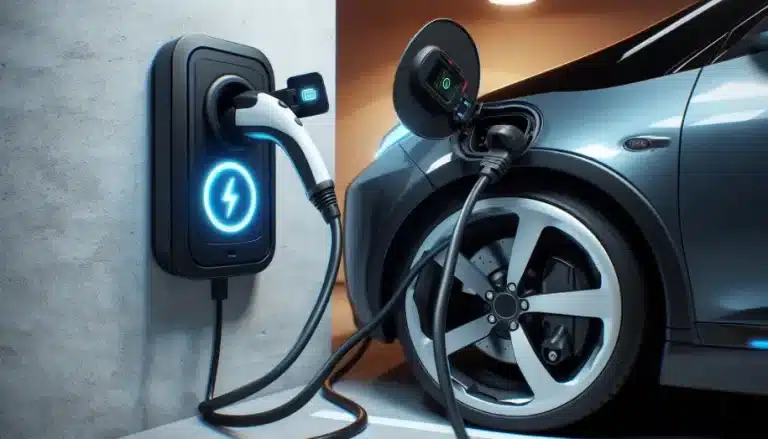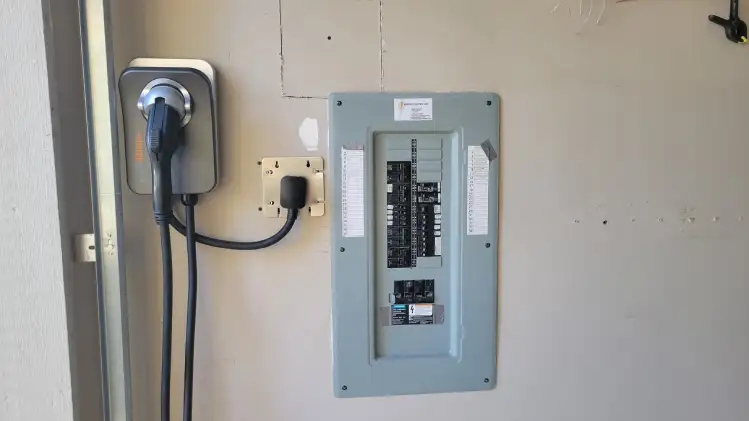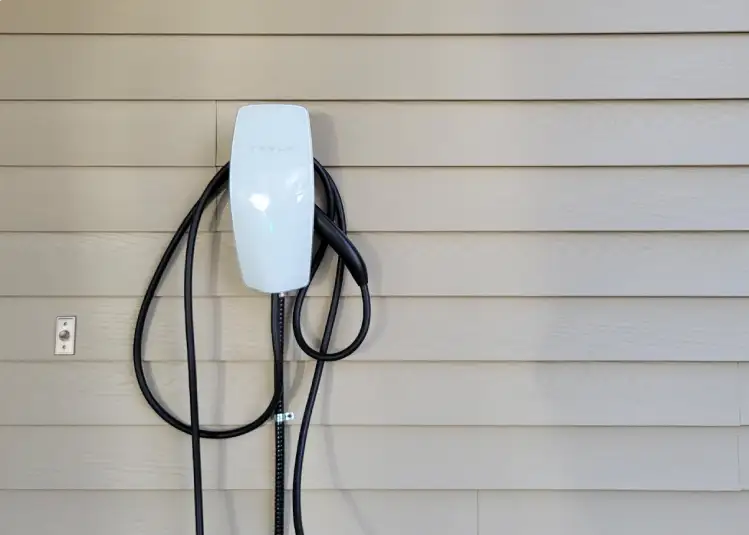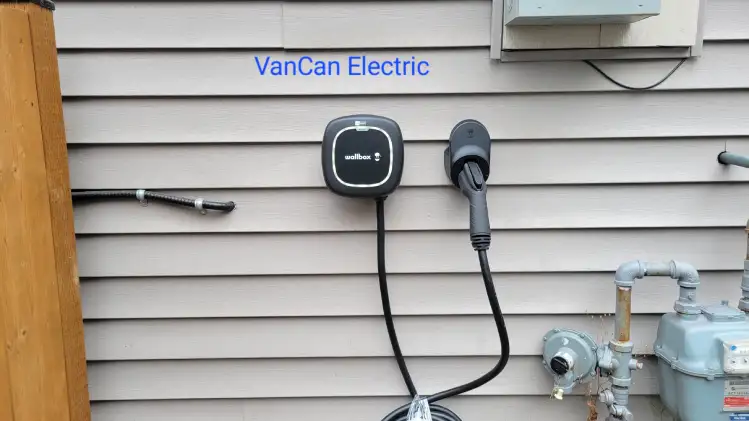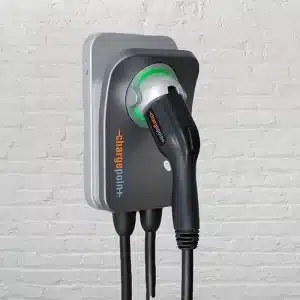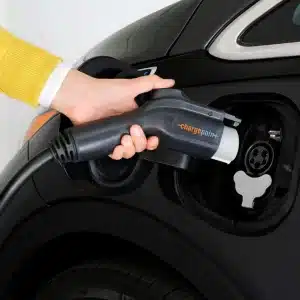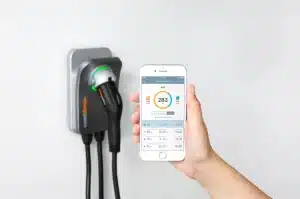EV Charging Levels Explained
Before diving into the details of each charging level, it’s important to understand what EV charging levels mean. EV chargers are generally classified into three categories: Level 1, Level 2, and Fast chargers (also known as Level 3 chargers or DC fast chargers). Each level offers different charging speeds, power outputs, and installation requirements, catering to different EV drivers’ needs.
Level 1 EV Charger: Slow but Practical
A Level 1 EV charger is the most basic charging option and is often considered the entry-level solution for electric vehicle owners. It operates using a standard 120-volt household outlet, which means it doesn’t require any special wiring or EV charger installation. Here’s a closer look at this option:
- Charging Speed: Level 1 chargers provide around 3-5 miles of range per hour of charging. While this may seem slow, it’s perfectly suitable for individuals who drive short distances and have plenty of time to charge overnight.
- Compatibility: Since Level 1 chargers use a regular household outlet, they’re compatible with almost all electric vehicles right out of the box.
- Use Cases: A Level 1 charger is ideal for those who don’t drive much daily and have easy access to a charging point at home.
Level 1 Charger Speed
It’s worth noting that while a Level 1 charger is convenient, it takes significantly longer to charge an EV compared to other options. For example, fully charging an electric vehicle with a large battery can take up to 20-40 hours using a Level 1 charger. However, for drivers who only need to top up their battery overnight for local commutes, it can be a sufficient solution.
Level 1 vs. Level 2 EV Chargers
In comparison to Level 2 chargers, Level 1 is significantly slower but more accessible, requiring no special electrical work for installation. Level 2 chargers, on the other hand, are faster but require more power, which we’ll discuss in the next section.
Level 2 EV Charger: The Ideal Home Charging Solution
A Level 2 EV charger offers a substantial upgrade over Level 1 chargers, making it the preferred choice for most EV owners, especially for home installations. Level 2 chargers operate on a 240-volt circuit, similar to what is used for large appliances like clothes dryers.
- Charging Speed: Level 2 chargers provide between 10-60 miles of range per hour of charging, depending on the charger’s power output and the vehicle’s battery capacity. This makes them much faster and more practical for daily use.
- Installation: Installing a Level 2 charger at home typically requires professional help from an electrician. Companies like Vancan Electric specialize in EV charger installation and can ensure that your home’s electrical system is equipped to handle the increased power demands of a Level 2 charger.
- Use Cases: A Level 2 charger is perfect for EV owners who drive longer distances or who want to quickly recharge their car in just a few hours.
Home EV Charging Options
When considering home EV charging, Level 2 chargers are the best solution for most users. They strike the perfect balance between charging speed and cost, providing the convenience of fast charging without the need to visit public stations.
Level 2 Charging Benefits
There are numerous benefits to choosing a Level 2 charger for your home:
- Faster Charging: With a Level 2 charger, you can fully charge most EVs in 4-8 hours, making it ideal for overnight charging.
- Cost-Effective: While the upfront cost for a Level 2 charger and its installation may be higher than a Level 1 setup, the long-term convenience and reduced charging time often make it worth the investment.
- Home Charging Independence: You won’t need to rely on public charging stations, as you can charge quickly and easily at home.
EV Charger Power Requirements
A Level 2 EV charger requires a 240-volt outlet, and in many cases, additional electrical work to accommodate the charger’s power output. Companies like Vancan Electric can ensure that your home is properly equipped to handle the charger’s electrical demands, making the installation process smooth and efficient.
Fast EV Chargers: Quick but Not Always Best for Daily Use
Fast chargers, often referred to as Level 3 chargers or DC fast chargers, offer the fastest charging speeds available. These chargers are typically found at public charging stations and are not usually installed at homes due to their high power requirements.
- Charging Speed: Fast chargers can provide up to 250 miles of range in just 30 minutes of charging, depending on the vehicle and charger.
- Use Cases: Fast chargers are designed for quick top-ups during long road trips or when you’re on the go and need a rapid charge.
Level 3 EV Charging Explained
Level 3 chargers use direct current (DC) rather than alternating current (AC) like Levels 1 and 2. This allows them to bypass some of the vehicle’s internal charging limitations and deliver power directly to the battery at a much faster rate.
Fast Charging Pros and Cons
While fast charging can be convenient, it has some downsides, especially if used frequently:
- Pros:
- Extremely fast charging times.
- Ideal for long-distance travel.
- Cons:
- Can put stress on your vehicle’s battery if used too often, potentially reducing battery life.
- Higher cost at public charging stations compared to charging at home.
Fast Charging for Electric Cars
Not all electric vehicles support fast charging, so it’s important to check your car’s specifications. Fast chargers are also more common at public stations rather than home settings, and companies like Vancan Electric typically recommend Level 2 chargers for home installations due to their balanced performance and cost.
Portable EV Chargers vs. Installed Solutions
While portable EV chargers offer flexibility, especially for drivers on the move, they typically operate at Level 1 speeds and require a standard 120-volt outlet. For most EV owners, an installed Level 2 charger at home offers much more convenience and faster charging.
Choosing the Right EV Charger
When choosing the right EV charger, consider your driving habits, your vehicle’s charging capacity, and whether you plan to charge primarily at home or at public stations. Here’s a summary of what to look for:
- Daily Drivers: If you drive regularly and want quick at-home charging, a Level 2 charger is likely your best option.
- Occasional Drivers: For those who don’t drive much and have plenty of time to charge, a Level 1 charger may be enough.
- Frequent Travelers: If you take long trips, knowing where Fast chargers are located along your route is essential, but relying on them daily can reduce battery life over time.
EV Charger Installation Guide
Installing an EV charger at home is a great way to ensure you have access to convenient charging whenever you need it. Here’s a quick guide:
- Choose Your Charger: Based on your needs, decide between a Level 1 or Level 2 charger.
- Hire a Professional: For Level 2 chargers, hiring an experienced company like Vancan Electric is crucial. They can assess your home’s electrical system and perform the necessary upgrades.
- Install the Charger: The installation usually involves setting up a dedicated circuit for the charger and ensuring it’s safely connected to your home’s electrical panel.
Impact of Fast Charging on EV Battery Life
Frequent use of fast chargers can degrade your EV’s battery faster than slower charging methods like Level 1 or Level 2. If possible, limit fast charging to occasional use when you’re on the road, and rely on slower charging at home for daily needs.
Conclusion
Understanding the differences between Level 1, Level 2, and Fast EV chargers is crucial when planning an EV charger installation. For most EV owners, a Level 2 charger strikes the right balance between cost, convenience, and charging speed. Companies like Vancan Electric can help you install the right charger for your home, ensuring a safe and reliable setup.
Whether you’re charging at home or on the go, choosing the right EV charger will make your electric vehicle experience much smoother and more efficient.

